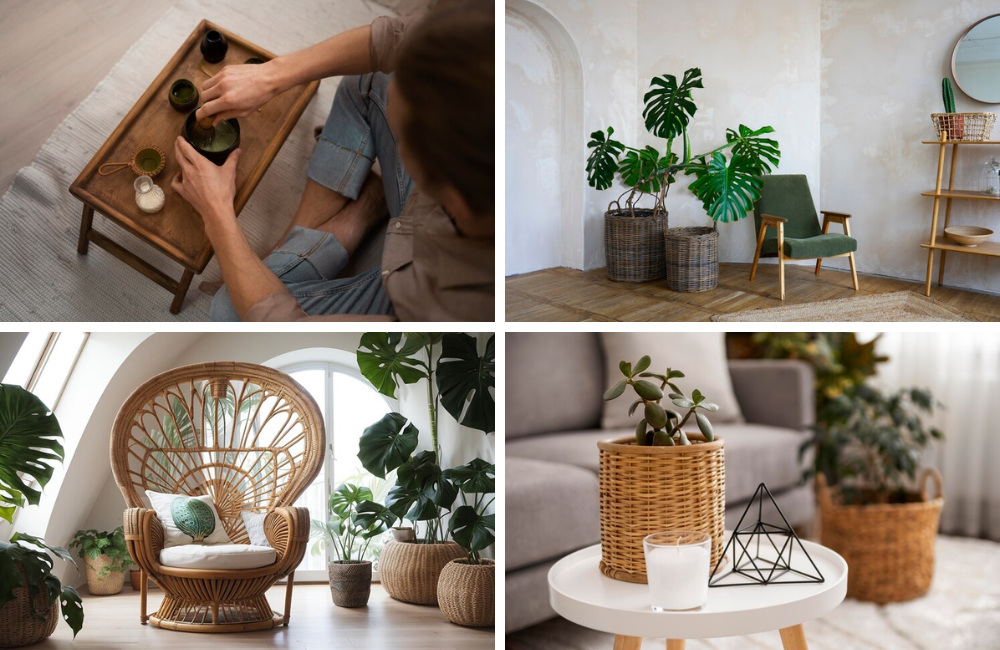According to the U.S Environment Protection Agency (EPA), air within our homes can be more polluted than many industrial sites! People who are exposed to this poor inner air quality for a prolonged time are at a higher risk of contracting respiratory or cardiovascular diseases.
But, unlike outdoor air pollution which has no solution, inner air quality can be made safe. A sustainable interior design, along with sustainable eco-friendly furniture can help maintain the Inner Air Quality (IAQ) effectively.
Let’s take a closer look.
What Pollutes The IAQ?
Before addressing the topic, let’s understand how the Inner Air Quality (IAQ) is affected.
Although invisible to the naked eye, our homes contain trapped pollutants, dust particles, and allergens. When we breathe these impurities for a considerable period, complex issues like pulmonary or cardiovascular issues creep up.
In fact, the Environmental Protection Agency stations indoor air pollution as among the top five environmental health risks.
And this is where the need for sustainable interiors and furniture steps in.
How Can Sustainable Materials Help?
You might ask how can sustainable interior designs help maintain the inner air.
Well, as you might know, sustainable interior focuses on the usage of natural materials. This means using materials with low-VOC emissions, thereby resulting in cleaner and pollutant-free inner air.
For instance, instead of the usual furniture or carpet, you can pick the following sustainable furniture materials for your interiors-
- Recycled Stuff
Try picking the recycled materials used to manufacture various household items. Instead of regular carpets, go for recycled plastic bottle rugs. Along with it, you may also try out recycled glass countertops, and reclaimed wood for furniture purposes. These reduce the environmental footprint, along with reducing the emission of VOCs, resulting in cleaner indoor air.
Note: Read this article to learn about the best repurposed furniture ideas that you can opt for to save space and cost.
- Low VOC Paints/ Finishes
Usual paints and finishes have higher VOC levels. After application, these VOCs can be a major irritating factor for the lungs. It is also responsible for its contribution to poor inner air. So, while choosing paints, sealants, or finishes, check for the Green Seal. This ensures that the product contains low VOC, thereby making it a safer option.
- Furniture Made From Natural Fibers
Instead of regular furniture, invest in sustainable and eco-friendly furniture design ideas. For instance, opt for furniture made from bamboo, or wood coming from sustainably harvested forests. These materials are breathable and also don’t trap pollutants as much as the regular ones do.
Sustainable Design Elements- What Do They Contribute?
Now, let’s move on and look at how sustainable designs help contribute to healthy inner air quality-
- Ventilations
The more ventilated your room is, the more it will allow natural airflow. So, try to keep the windows open for maximum air circulation to keep the interiors airy, breathable, and pollutant-free.
- Air Purifiers
Although not quite a design element, premium quality HEPA-filtered air purifiers work best to capture pollutants, dust particles, and allergens. This results in clean and healthy inner air, which is safe to breathe!
- Plants
These are natural air purifiers that you must install in your room for an enhanced aesthetic and safety measure. Indoor plants help in a myriad of ways. They are soothing to the eyes, absorb pollutants, and keep the air fresh and healthy.
Add-ons For A Clean IAQ
Along with design and sustainable furniture trends for interior decor, here are a few add-ons that will help maintain a hygienic IAQ-
- Daily Cleaning
Opt for a daily cleaning schedule, and deep cleaning once a month, to ensure that your interiors remain clean, and dust-free. Vacuum on a regular basis, and use natural cleaning products for a healthy IAQ.
- Moisture Control
Use humidity regulators to control the moisture level inside the house. Always try to maintain a moderate humidity level (between 30% and 50%). Anything above or below this will support mold growth, and might also have adverse effects on air quality.
To Conclude
Healthy living encompasses a myriad of aspects and a clean and hygienic Indoor Air Quality Index (AQI) stands as one of them. Opting for a sustainable interior design helps loads to achieve a healthy IAQ, thereby contributing to better pulmonary and cardiovascular health.
Switch to a sustainable future. Embrace sustainable design elements and start the change! Have some great insights on improving indoor air quality? Write for us home improvement blog!
Summary: Indoor air pollution is worse, and a leading cause of health issues. Learn how sustainable interior designs and elements help achieve hygienic indoor air quality.



